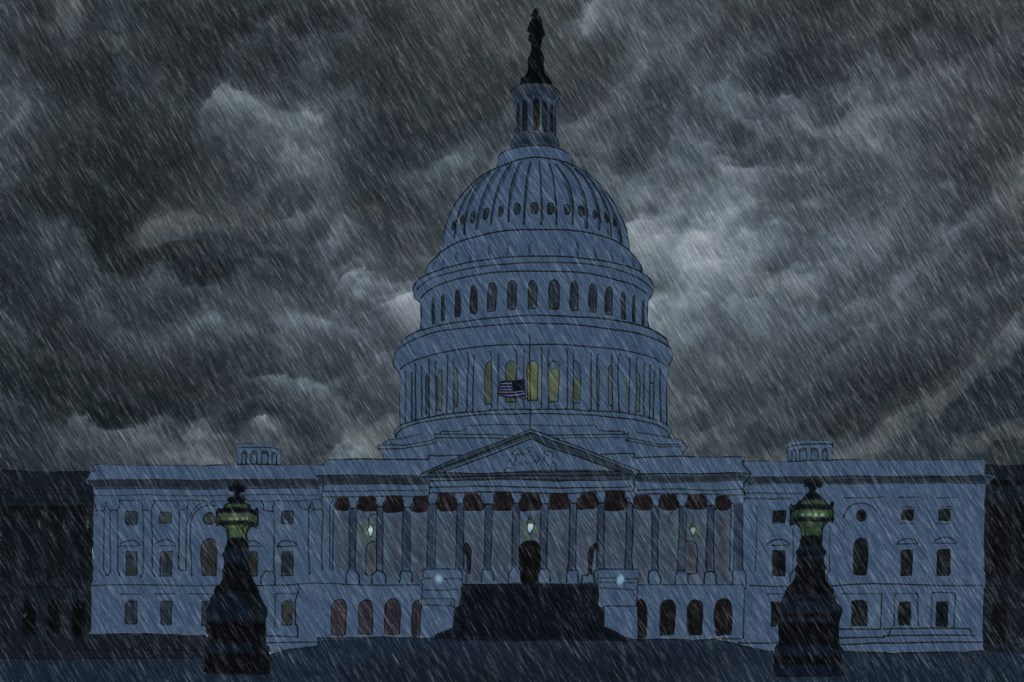To survive a trauma like the Capitol riot, it helps to discuss it

Graphic depictions of the deadly Capitol insurrection of Jan. 6 triggered fresh waves of trauma for many politicians, staffers, and viewers across the country yesterday as senators began a historic second impeachment trial of former President Donald Trump.
The 13-minute video that opened the trial showed visceral scenes of violent rioters breaking into the building as lawmakers and others frantically sought shelter.
“This is a difficult video to watch,” tweeted Representative Mike Quigley, Democrat of Illinois. Five people died during the storming of the Capitol, and two police officers who defended the building have since died by suicide.
But for Northeastern faculty who work in mental health as well as other trauma survivors, the ensuing public discussions about post-traumatic stress disorder and vicarious trauma present a small silver lining.
“This has been a moment of stigma reduction,” says Alisa Lincoln, professor of sociology and health sciences. “When people can see and understand the causes of trauma, there is a lot less stigma.”
House Speaker Nancy Pelosi, for example, attended post-trauma counseling and urged others to do the same.
Representative Jackie Speier, Democrat of California, vividly recalled the mob pounding on the doors of the House chamber, saying the event triggered memories of an earlier attack when she was shot five times during the infamous 1978 Jonestown Massacre. That shooting and subsequent mass suicide, orchestrated by cult leader Jim Jones, left 900 people dead.
The harrowing stories shared by these well-known national figures can help survivors feel more comfortable opening up about their own experiences, says Lincoln.
“More people are talking about mental health and there are more people than ever who can benefit from mental health support,” says Lincoln, who notes that even observing the insurrection on television can induce a type of trauma.
“Just watching that happen in our nation’s Capitol building, a place that we all thought of as so safe and so protected, can impact people,” says Lincoln.
Lincoln and other mental health professionals say there are many ways to address the deeply disruptive fears that can continue to haunt people long after these events. Beth Molnar, associate professor and director of the Population Health PhD Program at Northeastern, helped create a comprehensive online toolkit called the Vicarious Trauma Toolkit to aid people and workplaces affected by trauma.
“If the images and memories and fear they felt persist in a way that affects their ability to do their work or to sleep or to function down the road, it could result in PTSD,” says Molnar.
Molnar specializes in vicarious trauma, which is trauma suffered by those aiding the trauma victims, such as counselors at rape crisis centers or emergency medical teams. But many workplaces can benefit from Molnar’s toolkit.
Suggestions in the toolkit include ensuring that supervisors ask the right questions about specific life disruptions, such as any changes in sleep or work habits. Offices that have a gym on site or nearby should provide time for those dealing with trauma to use it.
“Bringing exercise into the workplace and giving people that time to destress has been really helpful,” Molnar says.
Employers also can shift fatigued employees’ duties for a few months to give them a break if they are often exposed to vicarious trauma.
“Leadership really needs to buy into the idea that treating mental health is important and is a priority,” Molnar says.
For media inquiries, please contact media@northeastern.edu.





